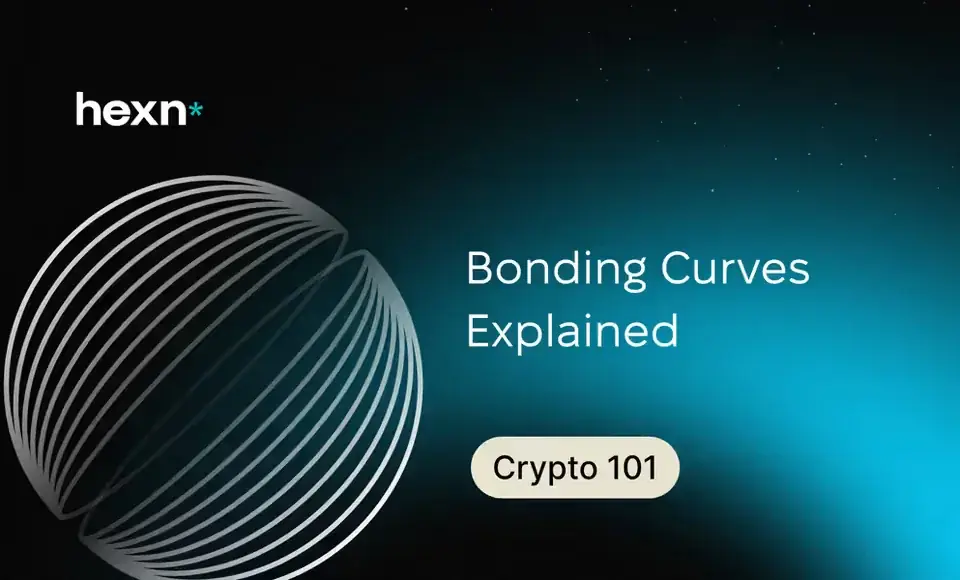Bonding Curves Explained
What Bonding Curves Are
A bonding curve is a smart contract that acts as an automated market maker, algorithmically linking a token's price to its supply.
By encoding this price-supply relationship directly on-chain, projects can create a token with built-in liquidity and predictable price behavior from day one. This makes them a powerful tool for token launches, social tokens, and innovative DeFi protocols.
Quick Insights
- Supply and price are connected: As tokens are minted or bought, the curve adjusts the price upward; when tokens leave circulation, the price typically falls.
- Different curves change incentives: Projects choose linear, exponential, logarithmic, or other shapes to reward early buyers, smooth volatility, or phase growth.
- Not a guaranteed safety net: Curves can make issuance predictable, but they do not eliminate market risk or token volatility.
How a Bonding Curve Works
At its core, a bonding curve is a mathematical rule implemented in a smart contract. When someone pays into the contract, the formula determines how many tokens they receive and at what price. The reverse happens when tokens are returned to the contract for redemption. Because the logic is deterministic, participants can see how prices will change as supply grows or shrinks.
Imagine a token that starts very cheap. Early buyers acquire tokens at low cost. As more people buy, the contract issues new tokens according to the curve and raises the price. This automated interaction between buyers and the contract creates continuous liquidity without a traditional order book.
Common Types of Bonding Curves
Linear Curves
A linear curve raises price in direct proportion to supply. For every additional unit minted, the price increases by a fixed amount. This simplicity makes it easy to forecast costs and can suit projects that want transparent, gradual price movement.
Exponential Curves
With an exponential curve, price growth accelerates as supply expands. Small increases in supply can cause disproportionately larger price gains, which tends to reward early participants the most. Teams use exponential shapes when they want strong early incentives, but that also increases risk for later buyers.
Logarithmic Curves
Logarithmic curves climb quickly at first and then slow as supply grows. This can generate an early burst of interest and liquidity, while reducing price sensitivity as the market matures. It’s a compromise between aggressive and conservative issuance patterns.
Beyond these, designers may use step functions, S-curves, or inverse shapes to match milestones, staged launches, or custom economic goals.
Real-World Use Cases
Bonding curves are popular for token launches, community coins, and experimental marketplaces because they automate pricing and provide on-chain liquidity. Typical implementations show a live progress indicator of supply or a price meter, so buyers know how their actions will move the market. When a token reaches a pre-set threshold, some systems convert part of the funds into a trading pool or open the token for broader exchange trading, bridging the curve-based issuance to secondary markets.
This model encourages early engagement — initial buyers enjoy lower prices, while later entrants pay more as supply increases. For projects, bonding curves can simplify distribution and reduce reliance on external market makers, though they are not a substitute for healthy market demand.
Risks, Limitations, and Considerations
While innovative, bonding curves are not risk-free. Token value can still fall if demand disappears, and volatile price swings remain possible. Other considerations include smart contract security, the economic sensibility of the chosen curve, and regulatory or regional constraints. Designers should model scenarios, run audits, and clearly communicate mechanics to participants.
Practical Tips
- For buyers: Understand the curve shape and how much the price will change as supply increases. Treat purchases as speculative and size positions responsibly.
- For creators: Choose a curve that aligns with your goals: reward early supporters, sustain long-term liquidity, or phase growth. Simulate outcomes under different demand scenarios.
- General best practice: Use transparent smart contracts, publish clear documentation, and consider third-party audits.
Final Thoughts
Bonding curves translate the familiar idea of supply and demand into programmable rules for digital assets. They can make token issuance and pricing more predictable and help bootstrap liquidity, but they are not a cure-all. Thoughtful design, security checks, and realistic expectations are essential when using bonding curves as part of a token strategy.
